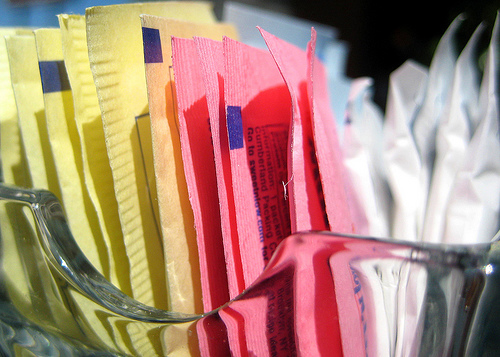
Giving your child a balanced and nutritious diet is important as it helps to foster growth and development. There is no need to ban any kind of food, however, there are certain foods that should be avoided as far as possible. Do not keep such foods at home in easy access of your kids. Foods that contain a large quantity of sugar, fat and salt should be avoided. Apart from that, processed and packaged foods, though they are convenient to use, should be avoided as they contain a lot of preservatives that are not good for health. Processed foods contain a lot of sugar, salt and fats in order to make them look and taste scrumptious. There are many side effects of such foods as they lead to obesity, decrease the capacity of the body to absorb vitamins and minerals, food allergies, cancer and many other problems. Therefore, being parents, you need to keep a watch on what your kid is eating for his or her healthy growth.
Foods that contain artificial sweeteners
Artificial sweeteners promise us a calorie-free sweetness but they are actually made of various chemicals to give us the sweet taste. The irony is that the population of US is becoming fatter ever since these artificial sweeteners have come into existence! For children the intake of these chemicals is detrimental to their health. Your body is made to take in natural foods and after having such foods containing artificial sweetener, your body has actually not derived any calories and then the craving for sugar starts. This is essentially a vicious cycle, as the more ‘diet’ foods you eat, the more you crave for sugary foods that lead to weight gain. Most artificial sweeteners do not have any nutritional quality at all and therefore the body is always hungry as it does not get the nutrients that are required.
Keep your kids away from diet colas and foods that contain artificial sweeteners. Artificial sweeteners have their own side effects, and when these chemicals break down in the body they can be very toxic. These sweeteners also adversely affect nerve cells and the corresponding signaling systems, which are crucial to a child’s development at this stage. There are many studies that confirm it. Artificial sweeteners such as aspartame when mixed with artificial quinoline yellow color prove to be seven times more deadlier in this combination.
Saccharin is another artificial sweetener, which despite having passed safety tests is known to cause bladder cancer in rats. Another sweetener by the name of NutraSweet is a combination of aspartic acid, phenylanine and methanol which is a toxic combination that can alter the neurochemistry of the brain. It is also linked to various other brain disorders like brain tumors, epilepsy, hallucinations, depression, dizziness and a host of other problems. Artificial sweeteners are found in over 5,000 food products ranging from chewing gum to children’s medicines.
Foods that contain refined sugar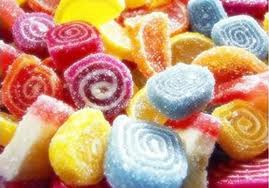
An average person in the United States has an intake of almost half a cup of refined sugar a day and is not even aware of it! Refined sugar is found in almost all processed foods. This is probably the reason why the number of diabetes cases in the US has shot up from 6.8 million in 1987 to 20.8 million in 2005 and still counting. A high intake of sugar leads to elevated levels of insulin that results in fatigue, weight gain, bloating, arthritis, gallstones, migraines, breast cancer, obesity, heart problems, cavities and gum disease. A high consumption of sugar is also responsible for disrupting the body’s mechanism to absorb nutrients such as calcium, B-vitamins, chromium, copper and magnesium. All of these factors ultimately lead to depression, increased stress and osteoporosis.
Therefore, refrain from indulging your kids with sugary snacks and replace them with healthier options such as fruits. Kids that consume a lot of sugar actually end up eating less of protein and have low amounts of iron, vitamin E, zinc and B vitamins in their daily diet. Excess sugar intake also adversely affects the behavior of kids, particularly their activity levels. Fruit juices are thought to be healthy, but it is not advisable for kids to have them in large quantities as they contain a lot of sugar. Instead, give them whole fruits which contain natural fructose and have fiber as well.
Foods that contain monosodium glutamate (MSG)
Another commonly used flavor is Monosodium Glutamate or MSG. This ingredient brings out a lot of flavor in food items and manufacturers use MSG in order to reduce costs that would otherwise go into putting in real ingredients. The usage of MSG in foods has always raised concerns as studies show that it destroyed the nerve cells in the brain when infant mice consumed it. Due to this, baby food manufacturers were told to stop using MSG in their products. MSG was initially put in children’s medicines, low fat milk, infant formula milk, chewing gum, candy and in certain vaccinations and its usage in these items in a camouflaged manner is still debatable. Kids are four times more sensitive to MSG than adults. Infants that are exposed to MSG can suffer from stunted growth and irreversible obesity, wheezing and asthma like conditions. In order to check whether a certain food item contains MSG or not check for the following ingredients: caseinate, autolyzed yeast, Monosodium Glutamate, hydrolyzed proteins, free glutamate, yeast extract and “natural or artificial flavors”.
Foods containing artificial colors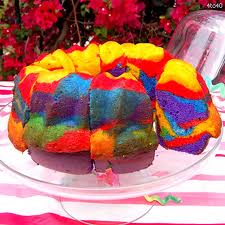
Artificial or synthetic colors are chemicals that are not natural. These are actually derivatives of coal tar and contain arsenic and lead, and are rendered to be unsafe by the FDA. Artificial colors are known to cause various adverse reactions in children such as hyperactivity, allergic reactions and ADD which leads to impairing of visual and learning faculties as well as nerve damage.
The color blue that is usually found in various bakery products, drinks and candies damages the chromosomes and leads to cell mutation and cancer. Citrus red, a banned color, is sprayed on to green oranges in order to give them an appearance of being ripe and this too causes damage to the chromosomes and leads to cancer. Green is a color that is rarely used, however, studies show that it leads to bladder tumors. Red color is commonly used in canned cherries, ice cream, baked goods and it is linked to thyroid cancer and nerve damage. Studies have linked this dye to nerve damage and to thyroid cancer. Yellow is a widely used color and it leads to allergic reactions and behavioral disturbances in children. Hence, try to buy foods that are not colored and look natural in their appearance.
Foods containing preservatives like sodium nitrite and nitrate
Preservatives are commonplace in processed and packaged foods. Sodium nitrite and nitrate are two preservatives that are stable ingredients in processed meat products like corned beef, bacon, hot dogs, ham, sausages and lunch meats. These preservatives do not allow bacteria to grow and keeps the food fresh for a long time. However, the drawback of these preservatives is that these compounds transform into nitrosamines that cause cancer in the stomach. The FDA has already recognized that nitrates are dangerous, however, they have not been banned as they help to prevent botulism. The apparent side effect of preservatives is vomiting, dizziness, nausea and headaches. Hence, try to visit the local butcher and buy fresh meat for the kids.
Food and drinks containing caffeine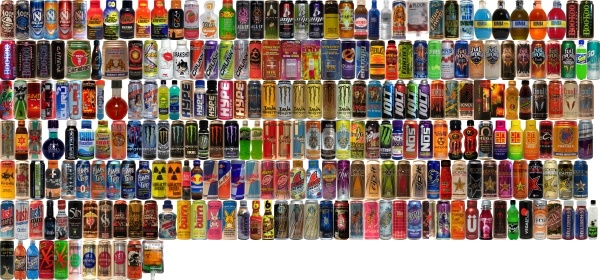
Caffeine occurs naturally in tea, cocoa and coffee, however, it is an addictive stimulant that is used in diet pills, gum, soft drinks and pain killers. When used in moderation, caffeine has many beneficial effects. However, a high intake of caffeine can extract the calcium from your bones leading to osteoporosis as well as infertility. Higher doses of caffeine can lead to various medical conditions such as miscarriage, birth defects, depression, heart disease, heartaches, sleepiness, irritability, insomnia, lethargy and behavioral changes. Hence, it is advisable to avoid giving foods and drinks to children that contain a high dose of caffeine as it leads to sleeplessness and behavioral changes in kids. It does not take a lot of caffeine to produce various side effects in kids such as an upset stomach, nervousness, jitteriness, difficulty sleeping, difficulty concentrating, headaches, high blood pressure and a high heart rate.
Foods and drinks containing Brominated vegetable oil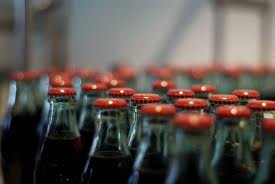
Brominated vegetable oil or BVO is an ingredient used in soft drinks in order to maintain their flavor oils in suspension. The main ingredient of BVO is bromate, which is poisonous. Only two ounces of a two per cent solution of BVO can lead to severe poisoning in a child. This ingredient has been rendered unsafe by the FDA as it leads to growth problems and also is linked to organ damages. Surprisingly, the FDA has failed to take any action for the usage of this deadly ingredient in foods and therefore it is still legal to use it. You cannot even find out whether a particular food contains BVO or not, as it is not compulsory for manufacturers to mention it on the labels. More than 10% of the sodas manufactured in North America have had BVO as an ingredient for decades. BVO has side effects such as nerve disorders, memory loss, behavioral problems and skin lesions.
Foods containing olestra
Olestra or olean is a calorie-free substitute for fat which is used in a lot of chips and snacks manufactured by Frito Lay. The molecules of this food additive are actually very large in size and hence they pass through the body without getting digested. Due to this a lot of fat soluble vitamins K, E, D and A attach to the substance and get flushed out of the body. At present, the packaging of olestra products contain a warning label that states that olestra can cause side effects like loose stools and abdominal cramping. These gastrointestinal side effects are not life threatening, but they are very worrisome and unpleasant for a child. The depletion of carotenoids from the body due to olestra is very detrimental to health as they have important health benefits. It also prevents the absorption of essential nutrients and vitamins inside the body which are essential for a child’s overall health and development.
Foods containing partially hydrogenated vegetable oil
Foods that contain partially hydrogentated oil are trans fats that are now found in all kinds of children’s snacks, bakery products and various packaged foods. Partially hydrogenated oils are made by reacting vegetable oil with hydrogen that leads to a reduction in polyunsaturated oils or good fats. Eventually, this leads to the formation of trans fats. Trans fats are found in various foods such as margarines, vegetable shortening, baked goods, candies, crackers, snack foods, cookies, salad dressing and many more foods. Foods containing trans fats lead to various health issues like obesity, colon and breast cancer, heart disease, high cholesterol levels and atherosclerosis. These conditions, surprisingly, have been found in children as well. It is important for parents to intervene and provide healthier unprocessed snacking and food options for their children as trans fats are extremely bad for a child’s health.




